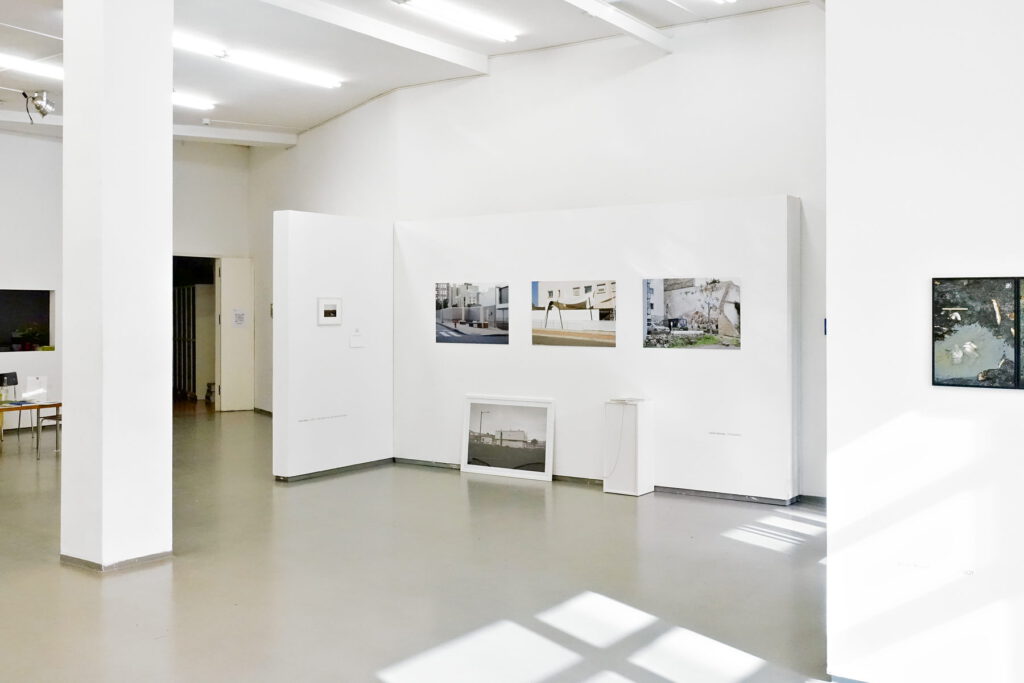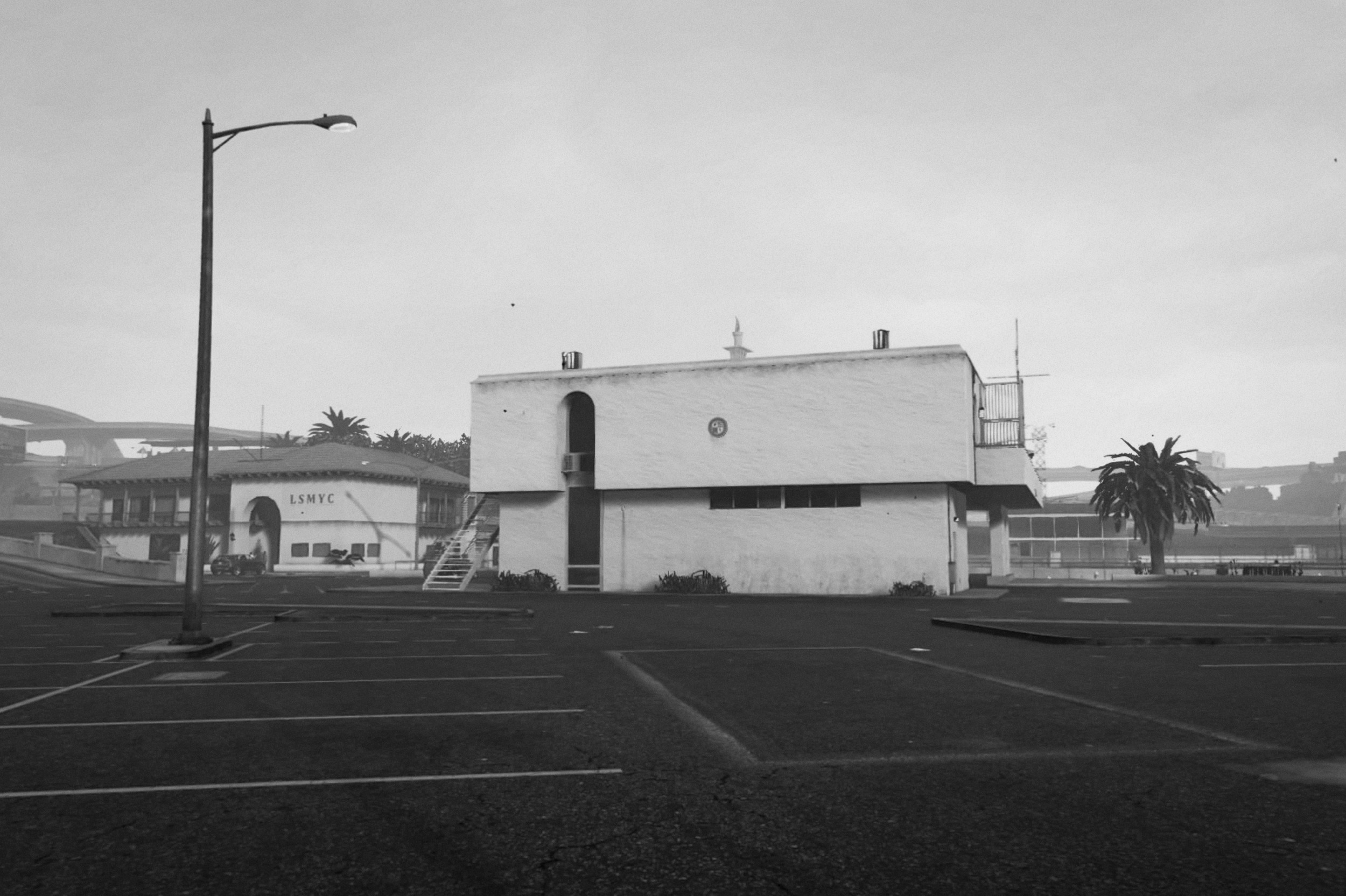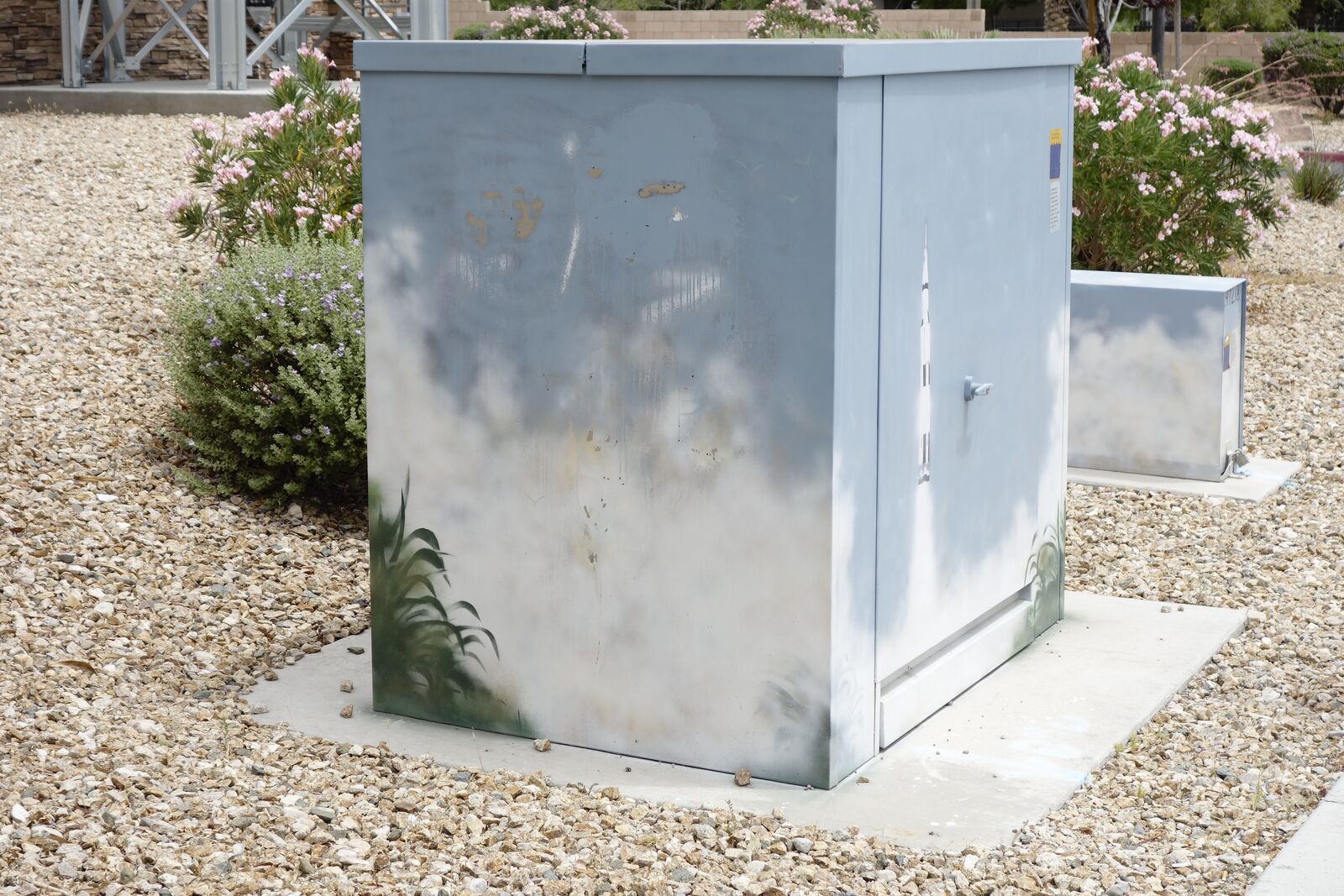Topaganda is my long term photography project: it’s three chapters of biography, best of, and finally, disillusionment. I start with a theory of “photographic punchlines” which I test with aesthetic stunts on Tumblr. Next, I try to frame and stage reality in a way that makes it look virtual. I adopt the New Topographics’ subject matter; they become the stylistic goal for the visual language I develop. As this journey comes to an end (stylistically) and coincidentally, its origin (geographically), I find myself feeling queasy: Am I producing propaganda for a problematic role model?
Topaganda is a book and was first presented during European Month of Photography, May 2023, at Neue Schule für Fotografie, “Ins Blaue”, teachers’ & staff exhibition.
It has 118 pages, 3 chapters with 85 photographs (taken between 2009 and 2022), a prologue of 3 edited “in-game photographs”, and a “thesis” text. Please find below the full text, selected photographs and exhibition documentation.
I made this book using only open source tools.
Exhibition views
Excerpts
Chapter I. Topop
Chapter II. Virtual Reality
Chapter III. See America Right
Text
Something About Nothing
There are TV comedies that are said to be “about nothing”. There is “no learning”: the characters don’t grow, they don’t change, they are neither moral nor immoral, they are amoral. These shows, of course, are not “about nothing”; instead, they are “not like the other shows”. They are characterized by not caring about the old, boring morality plays and relationship dramas. They don’t care about people, they only care about comedy.
To an analytical mind (like mine), this formalism can seem pure, like the essence of comedy. A revelation of the inner workings of the medium by stripping away the nasty human parts. Still fun and funny, but the pleasure is supposedly deeper, more intellectual.
I’ve long thought of photographs (and works of art in other media) as structurally similar to jokes: setup (what you see, on the surface) and punchline (what it’s about; Barthes’ punctum). So if I took away the something — the humans, their portraits, their drama, their morality — would I be left with something pure? Would it still be good, or at least interesting? Like the comedy sub-genres, could I call it anti-photography, or alt-photography?
I reduce my photographic subject matter, try to trim my visual language, focus on its alphabets and grammars, put syntax over semantics. I try to make Analytical Photography, to become a photographer’s photographer, like the so-called comedian’s comedian.
Pop Topographics
For the language parts of my undertaking I find a theoretical support system, an art movement to relate to: the venerable New Topographics. NT offers an accessible subject matter: landscape, architecture, roughly: technology in a tamed nature. It combines a dispassionate view with a (pseudo-)scientific label, “topographic”. The ascribed “absence of style” is of course absurd (or the exact vibe in the history of photography is lost on me), but as a mission statement, as a framework, it feels like a genre, my genre: The slow-paced narratives and soft, golden stock of 1970s movies (think Network), the rigid structures of punk rock music slightly warped by artsy flourishes and formalist experimentation (think Devo).
As a publication medium I find social media, specifically Tumblr. A micro-blogging service focused on short texts and single pictures, with clunky social features, it favors one-shots devoid of context, reduced to solitary “bits”. It comes with a built-in aesthetic and attitude: aloof, pre-millennial gloom, before everything was commoditized and optimized into professional “content”. A few years ago, this aesthetic might have been called “no filter”, at the time of writing, it’s back, in “photo dump” form. On Tumblr, I collect visual puns, combine them with short text fragments, allusions, hyper-obscure references, to a small audience (an audience nonetheless). I call it topop, a portmanteau of topo-graphics and pop.
Virtual Reality
Topop is, by and large, documentary photography – fringe and minimal, but well within the limitations of the form. But over time, the pop part of topop seems to break out into pop art territory. I have always liked optical illusions and video games. (Hey, optical illusions could be called “video games”.) I came of age when Magic Eye briefly brought stereoscopy back into the mainstream, and I saw virtual spaces become three-dimensional (in a specific sense). I saw them mature from clunky, prime-colored cardboard boxes, with bad perspective projections to something that could be considered photorealistic. If the photo in question is of static, simple houses, no vegetation, and you squint.
I happen to like taking pictures of static, simple houses and the geometric structures and shapes they are made of. I am interested in how humans perceive space. It looks like there might be something there.
The history of computer-generated images (CGI) could be seen as vision in reverse: in order to trick our eyes (trompe our oeils), we have to reinvent, or rather rebuild from scratch, all the tools, tricks, letters, words, and grammars. From first principles we (radically) construct a (well, the) visual language, bottom up. Since I am reducing my own visual language top down, why not have them meet in the middle? This gives me a toolbox of new references, metaphors and allusions, to then reduce my subject matter even further, from simple houses to walls, planes and polygons. Working titles become “over-construction”, “hyper hyperbola”, “virtual reality”. I hunt for photographs where reality looks like CGI — from the 1990s, so you can still see the seams. I push things into the uncanny valley, from the other side of the valley.
See America Right
To come full circle, I take my new visual toolbox to the New Topographics’ homeland. (I had the Bechers’ homeland covered.) Over several trips to the United States, I take many photographs, some of my best “jokes” and most refined visual puns. Sometimes reality (like a nasty human part) creeps back in, but the essence is still purely visual. The more I learn about US politics and history, the more reality creeps back in. The more I learn about structural racism and how much this country was built on — and still runs on — the exploitation of people and nature, the weirder I feel about my view from the outside, which not only doesn’t scratch the surface, but actively avoids doing so.
Topaganda
You can’t be “about nothing”, because then you become the opposite of “something”, and that opposite evokes a feeling. A show “about nothing” does not become amoral, it becomes a show about amoralism. It can be ironically detached, or cynical, or complicit propaganda. (And so can the viewer.)
By using a visual language designed to be “about nothing”, but applying it to a specific subject matter (something; not nothing), the work (a show or a photograph) can become cynical about its subject. Or ironically detached, or complicit propaganda.
Which can be appropriate for some subjects. But if your subject is serious, and your show stays funny, well, congratulations, you’ve created accidental propaganda. If your show is about the police, but is really a sitcom, well, it might be copaganda. If your photographs are about the “man-altered landscape” of the US, but are really visual puns, well. And then you realize, that it’s not even accidental. The omnipresence of subject matter, like an aether, like dark matter — like, structurally — makes it swoop into voids, and lets it slip by, populate our subconscious. There is no such thing as amoral, or unpolitical.
Now pair that with an approach that relies on pushing things into a virtual realm, ostensibly for artistic exploration, but also to avoid “dealing with stuff”, and you get lazy propaganda. Propaganda for a visual language born out of a system built on terrible things.
I started by imitating the New Topographics. I reduced them to what I consider their essence: visual puns. I infused that essence with observations about visual perception and virtual spaces. When I reapplied this to the original subject matter, I found: disillusionment.
This book illustrates the journey of my disillusionment with the United States; more specifically, with its pop culture, its shows about nothing, and with the idea that it is even possible to make art about nothing.



















